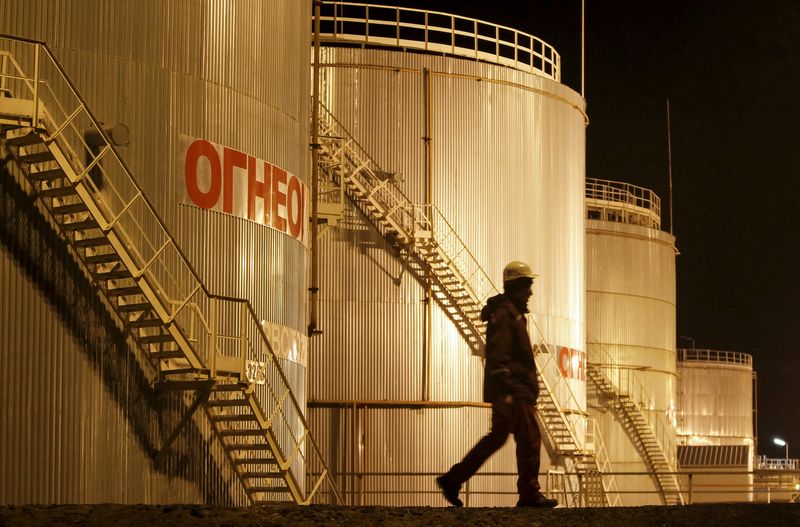Investing.com – Goldman Sachs analysts argued in a note Monday that fears of a macroeconomic recession were primarily responsible for the recent 6% decline in Brent prices.
Despite these concerns, Goldman Sachs remains confident that the $75 price floor will hold, driven by several key factors, including resilient oil demand, limited recession risk and possible recovery from speculative positioning.
Macro sell-off analysis
Goldman Sachs points out that last week’s sharp drop in oil prices coincided with similar declines in stock prices and bond yields. This move suggests that macroeconomic fears, rather than oil market fundamentals, are the main drivers of the sell-off.
The analysts point out that despite these fears, recent US economic data and oil demand trends point to resilience.
Resilient oil demand
Analysts note that oil demand remains robust in Western economies and solid in India. American demand for gasoline, European consumption of oil products and use of aviation fuel in OECD countries show above-trend growth.
In fact, US oil demand reached a record high in May, up 2% year-on-year, and Indian oil demand remained strong in July, up 4% year-on-year, according to state refiners.
Limited recession risk
Although Goldman Sachs has signaled an increase in recession risk in the US, it has only increased the probability of a recession over a twelve-month period to 25%.
“They continue to view recession risk as limited given the good data, the lack of major financial imbalances and the 525 basis points headroom for Fed cuts,” the analysts said.
The analysts believe that the recent rise in unemployment is less worrying than in previous cycles, given the low number of permanent layoffs and temporary frictions in the labor market.
Potential recovery in speculative positioning
Goldman Sachs also sees room for recovery from speculative positioning in the oil markets. Current speculative positioning is at very low levels, offering potential for a recovery as growth sentiment improves.
The analysts expect resilient macroeconomic data, including lower initial jobless claims in the US and sequential accelerations in US employment and Chinese GDP in the third quarter, to support this recovery.
Downside risks for the $75-90 range
Despite confidence in a $75 bottom, Goldman Sachs acknowledges several downside risks to their $75-90 range for Brent prices, especially for 2025. These include:
-
Recession risk: In a moderate recession scenario, they estimate that oil prices could take a $30 hit by the end of 2025, with Brent potentially falling to $51 per barrel.
-
Potential Trade Rates: The possibility of new trade tariffs, especially under a possible second Trump term, could weaken GDP and oil demand, shifting risks further down.
-
Increased reserve capacity: The high spare capacity within OPEC+ and the comfortable commercial OECD shares reduce the sensitivity of oil to geopolitical developments and increasing shocks.
-
Risks to Chinese demand: Weak demand forecasts for China could result in further downward pressure on oil prices.
Strategic shift to gold
Given increased downside risks to oil prices, Goldman Sachs recommends that long positions now provide the greatest commodity hedging value for portfolios.
They maintain a bullish gold price target of $2,700 for 2025, citing gold’s hedging benefits against geopolitical shocks, trade tariffs and financial sanctions.
Furthermore, gold is seen as a protective asset against negative aggregate demand shocks and is expected to benefit from likely Fed rate cuts and increased central bank purchases.


